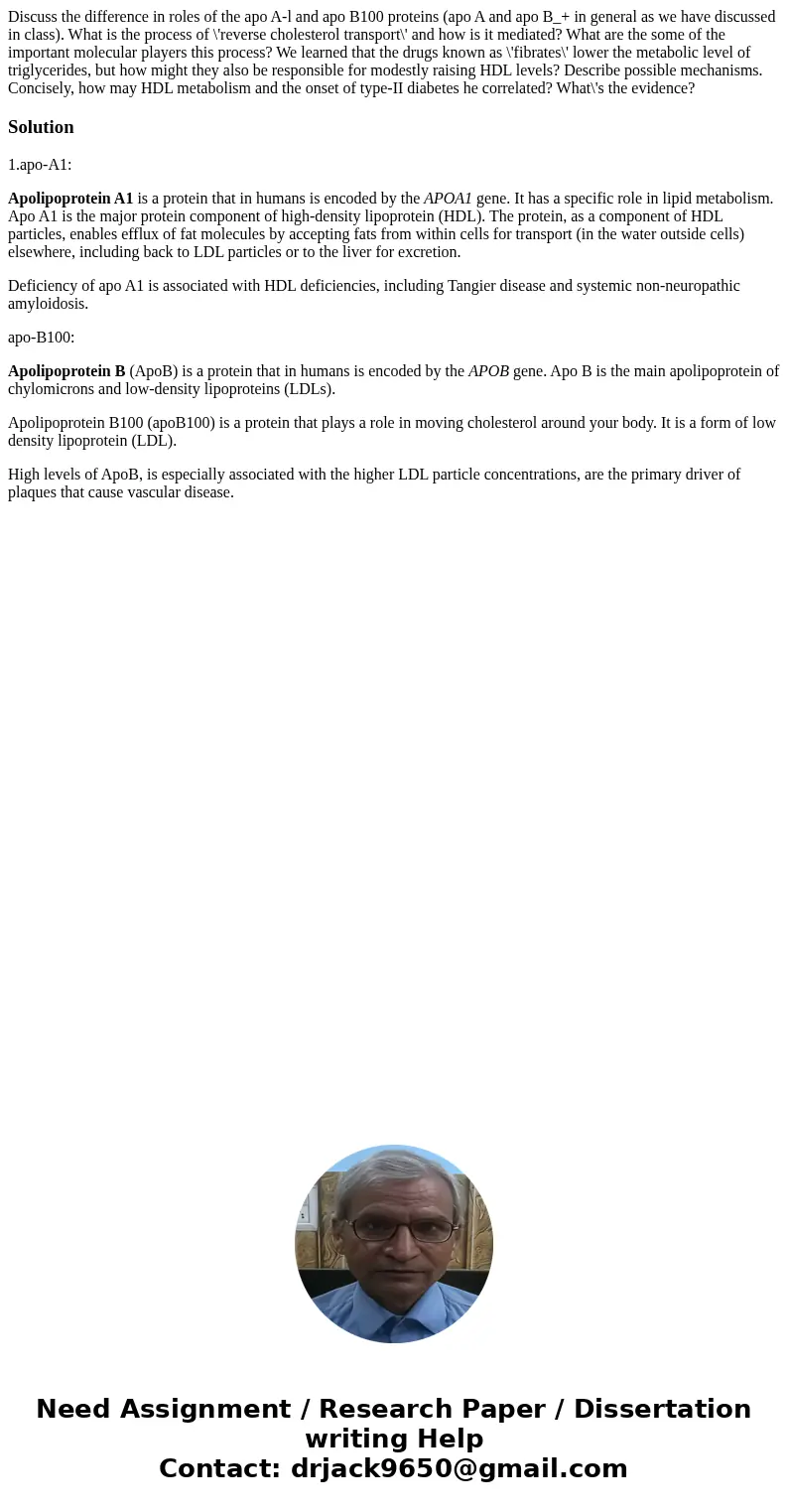Discuss the difference in roles of the apo Al and apo B100 p
Solution
1.apo-A1:
Apolipoprotein A1 is a protein that in humans is encoded by the APOA1 gene. It has a specific role in lipid metabolism. Apo A1 is the major protein component of high-density lipoprotein (HDL). The protein, as a component of HDL particles, enables efflux of fat molecules by accepting fats from within cells for transport (in the water outside cells) elsewhere, including back to LDL particles or to the liver for excretion.
Deficiency of apo A1 is associated with HDL deficiencies, including Tangier disease and systemic non-neuropathic amyloidosis.
apo-B100:
Apolipoprotein B (ApoB) is a protein that in humans is encoded by the APOB gene. Apo B is the main apolipoprotein of chylomicrons and low-density lipoproteins (LDLs).
Apolipoprotein B100 (apoB100) is a protein that plays a role in moving cholesterol around your body. It is a form of low density lipoprotein (LDL).
High levels of ApoB, is especially associated with the higher LDL particle concentrations, are the primary driver of plaques that cause vascular disease.

 Homework Sourse
Homework Sourse